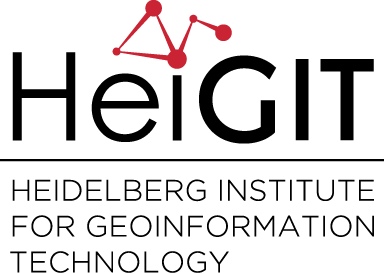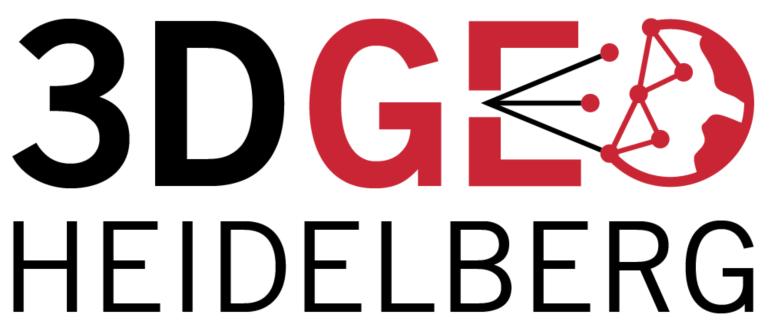Category: Research
-
LiDAR meets Art
An interesting 3D art project using point clouds of the 3D Spatial Data Processing research group of Prof. Bernhard Höfle (3DGeo) was recently realized by artist Gerrit Frohne-Brinkmann. The data were acquired from natural karst cave features in the Dechen Cave near Iserlohn, Germany both with a low-cost Kinect sensor and terrestrial LiDAR. For the…
-
Call for papers – PFGK18 : Photogrammetrie – Fernerkundung – Geoinformatik – Kartographie – 2018
Feel free to submit papers to our DGPF Working Group on Geoinformatics (Prof. Haunert, Prof. Höfle). Important dates for submission can be found here: http://www.pf.bgu.tum.de/pfgk18/pfgk18_dat.html Deadline for regular papers is 31 October 2017!
-
Open land cover from OpenStreetMap and remote sensing
In a recently published study (1), we produced a web based land use land cover (LULC) product based on OSM tags which are constantly updated by contributors/volunteers, and present a Remote Sensing based solution when tags were absent for a test site. We harness the combined benefit of an open source and ever-growing machine generated…
-
GIScience group members at the ISPRS Geospatial Week 2017 in Wuhan, China
Last week (Sept. 18-22, 2017), our six colleagues, Prof. Alexander Zipf, Doctoral Candidate Xuke Hu, Dr. Hongchao Fan, Dr. Martin Hämmerle, Dr. Zhiyong Wang, and Dr. Wei Huang, participated in the ISPRS Geospatial Week 2017 held in Wuhan, China. In the opening ceremony on Sept. 18, 2017, the U.V. Helava Award was presented to Dr.…
-
LandSense Questionnaire
http://bit.ly/2upEw7a <- LandSense Questionnaire LandSense aims to develop an online marketplace where companies that develop IT solutions using LULC data in one of three themes – urban, rural, and forestry, can acquire this information and further develop their products. By completing this questionnaire, you help us develop and further enhance our platform. Thank you very…
-
Study “Multiscale analysis and reduction measures of urban carbon dioxide budget based on building energy consumption” published
The 3D spatial data processing group had the opportunity to collaborate with the team of Prof. Tzu-Ping Lin from National Cheng Kung University, Tainan, Taiwan, within the frame of a study dealing with carbon emission reduction measures in urban environments. One option of reducing carbon emission by buildings is to install photovoltaic (PV) panels in…
-
ArchEyeAutomatic summer school 2017
From 26 to 28 July, the 3D spatial data processing group contributed to the “ArchEyeAutomatic summer school 2017: Cameras, Drones, and Laser scanning. Modern ways to document ancient objects”. With a focus on documenting and analyzing archaeological sites and objects, the summer school introduced around 40 participants to various methods of close-range remote sensing at…
-
Heidelberg Center for the Environment: Call for Project Ideas (Deadline: 17 Sept 2017)
The funding program HCE-START of the Heidelberg Center for the Environment (HCE) for the developement of major interdisciplinary projects dealing with environmental research questions has been extended. The new application deadline is 17.09.2017. HCE-START will be run and hosted at Heidelberg University only. HCE-START aims to support two interdisciplinary research lines: 1) the initiation of externally…
-
Innsbruck Summer School of Alpine Research 2017: Close Range Sensing Techniques in Alpine Terrain
From 16 to 22 July, the second ISPRS Summer School of Alpine Research took place in Obergurgl, Austria. Around 40 participants from four continents enjoyed a mix of lectures, field work and hands-on data processing related to various research topics in high mountain research. Hosted at the beautifully located and perfectly equipped Alpine Research Centre…
-
Heidelberg Center for the Environment: Bernhard Höfle joins the Board of Directors
The Executive Committee of the Heidelberg Center for the Environment (HCE) – the interdisciplinary research center for Environmental Sciences at Heidelberg University – has appointed Prof. Bernhard Höfle as new Vice-Director for Natural Sciences. Prof. Thomas Meier was appointed new Executive Director and Prof. Jale Tosun new Vice-Director for Social Sciences. The directors are responsible…


